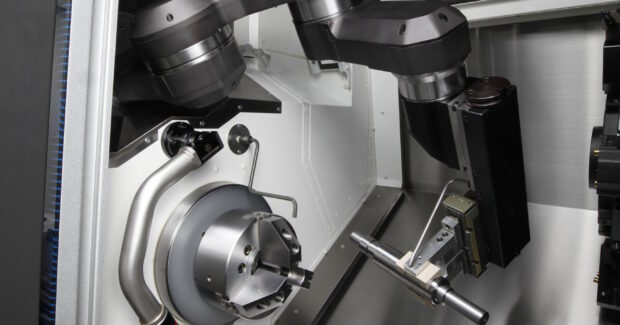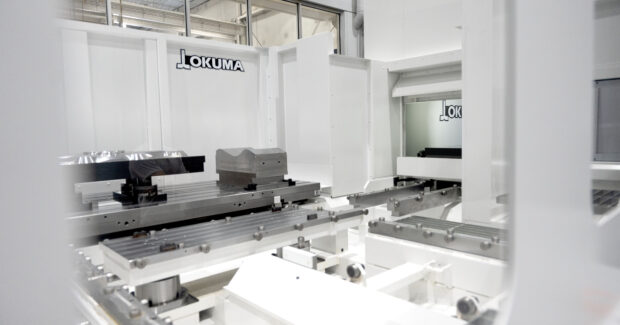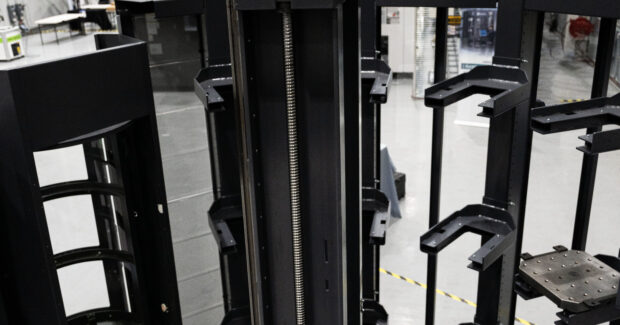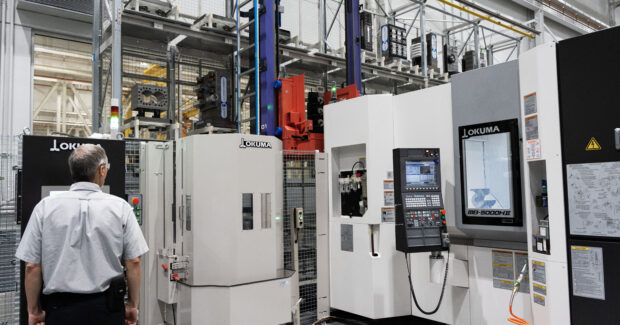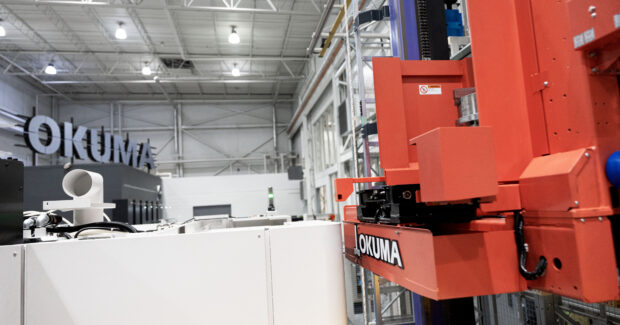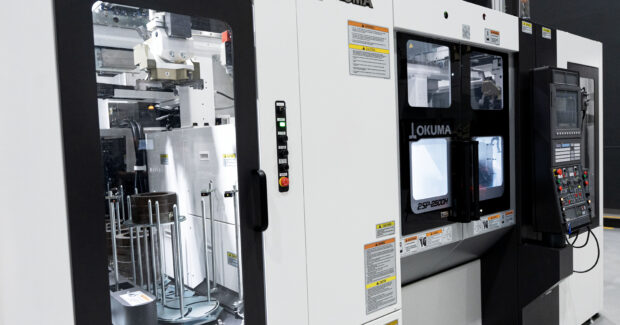Beyond the Machine: Total Solutions
Six steps to successfully adopting CNC automation in your job shop. It’s important for shops to know their baseline productivity to seek out the benefits they’re looking for in order to make improvements.
Posted: August 28, 2023

Machine tool automation is becoming an increasingly important part of today’s manufacturing landscape as more small and mid-size job shops look to improve their operations’ overall efficiency and profitability. Depending on the specific goals and benefits a shop wants to secure, different types of automation and automation strategies will be necessary.
Fortunately, in today’s machining ecosystem, there is an automation solution for virtually any need and for every budget. Now the question is: how do you get started? Regardless of the level of automation you are seeking, identified below are six foundational steps that will help your shop decide how to proceed with the adoption of automation.
Step #1: Recognizing Automation can be for all Shops — Even Yours
Since the 1960s, automation has played a role in manufacturing. Automotive manufacturers were some of the earliest adopters, but today, automation is found in a wide variety of industries and companies of all sizes.
When working with some of the earliest automation systems, every pickup point had to be taught to the robot. It was a time- and labor-intensive process which required a dedicated robot programmer or integrator to manage, as well as multiple technicians to keep them running. Today, AI and machine learning play a key role in simplifying automation and minimizing the skill level required to integrate and use.
As the industry continues to evolve, several key categories of CNC automation remain consistent in bringing benefits to shop floors around the globe. Ranging from simple to complex, bar feeders to FMS, cost-effective to more expensive, plug-and-play implementation to customizable solutions, the many levels of automation truly make adoption a viable reality for any machine shop — even yours.
Step #2: Create an Operational Baseline to Identify Areas of Improvement
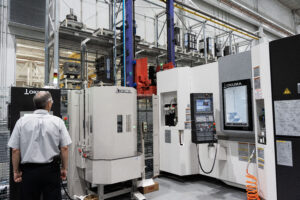
In considering introducing automation to the shop floor, it’s important for shops to know their baseline productivity to be able to seek out exactly the benefits they’re looking for and make improvements. How much does it cost to make your part? What is your current spindle utilization? Once you’ve established your current baseline, you can look ahead to how automation can help you improve, whether that’s cost, time or maximizing labor.
When you understand where your problems are or where you need to see improvement, you can easily identify anything in your process that’s standing in the way, take measures to fix those areas, and implement processes that will help you meet your goals. Start with the simplest, immediately recognizable barriers — once you’ve fixed the most obvious problems, you can track the data, see improvements, and potentially identify more areas that can be optimized by adding CNC automation.
Step #3: Define and Measure Your Shop’s Short- and Long-term Goals
Automation can help your shop achieve increased throughput, yield and productivity. By pinpointing the exact goals and aspirations you have for your shop will help determine the type, category, and even the placement of automation onto your shop floor. Manufacturing processes are much easier to design and implement with technology when a clear definition of the desired outcome is charted. Here are a few ideas to get you started with stating your shop’s goals:
What goals would make automation a viable solution? How can we measure and define success? This typically involves developing metrics and KPIs that enable you to assess how well your proposed automation strategy will work.
For example, list the state and gaps for the below areas of opportunity:
Productivity
- Shop capacity
- Yields
- Lead times
- Rejects/scrap
- Setup/machining time
- Machine utilization
- Sales pipeline
- Costs
Manpower requirements
- Energy consumption
- Downtime
- Maintenance/repair
- Personnel
Employee turnover
- Recruitment/retention
- Insurance costs
- Employee morale
Step #4: Assess CNC Operator and Team Readiness
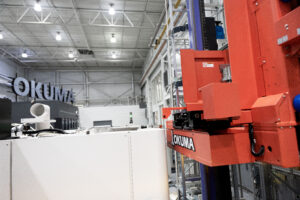
It’s critical to understand that when implementing any type or level of automation, you’re changing the way your shop floor operates. This affects how your machines operate and, more importantly, the roles and responsibilities of your operators and programmers. Your machines will adjust to automation instantly. Your employees will need time and even training.
Ideally, you want to include operators and programmers in the automation planning and implementation processes, getting their input as well as their buy-in. They are a primary resource in understanding where automation is most needed and to what degree. Involving them early also allows you to assess their readiness to make the transition and provide any necessary training so they can hit the ground running.
Step #5: Lay Out Your Shop’s Ideal Automation Roadmap
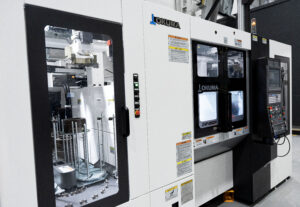
With your operational baseline established, automation goals defined, and operators’ input, it’s time to identify your best candidate(s) for automation and a roadmap for moving forward. With so many choices and variables, this can seem daunting. Every shop is different, and it’s important to understand that even the smallest steps forward can achieve huge results over time.
Step #6: Lean on Experts During the Automation Selection Process
As mentioned, automation encompasses a wide array of product solution sets that range in complexity, cost, and compatibility with different machine tools, and even providers. While the benefits of automation are very attractive, your shop will more than likely look to the advice of a local distributor on the correct automation system that is perfect for your application, as well as provide aid in the integration process.
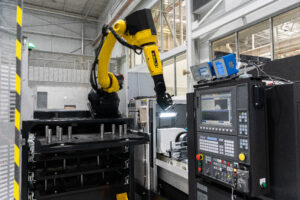
Of course, reaching out to vendors whose solutions you may be considering should be a primary source of information. Beyond the usual spec sheets and demos, push the vendor for more detailed information. Are there time studies, simulations, or cost analyses that can be conducted in advance to help predict/justify adding automation? It always helps to involve the distributor in obtaining this type of deeper dive information. Don’t be afraid to ask.
Find a vendor who will be there for your shop during the entire process, working behind the scenes for you, as well as other third-party suppliers, to ensure you have access to automation tools that seamlessly integrate with and maximize the performance value of your existing or new machine tools.
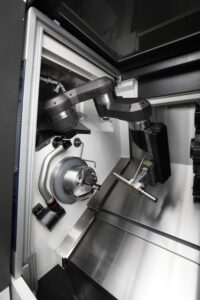
One company, Okuma America Corporation, has recently launched the Okuma Factory Automation Division, created to recommend, sell, and support manufacturing production line systems comprised of Okuma CNC machine tools and integrated automation technologies. The new division is based at the Okuma America Corporation headquarters in Charlotte, N.C. Solutions will consist of both proprietary and integrated automation systems, including automated material loading and unloading systems, machine tending and industrial robotics, automated workpiece pallet changers (APC), flexible manufacturing systems (FMS), smart manufacturing systems and more.
Put Automation to Work for You
Now you’re ready. The analysis of your shop is complete. You have had great discovery sessions with your local distributor and automation partner. Now it’s time to move forward with your decision. Nothing can stop you.
Subscribe to learn the latest in manufacturing.

